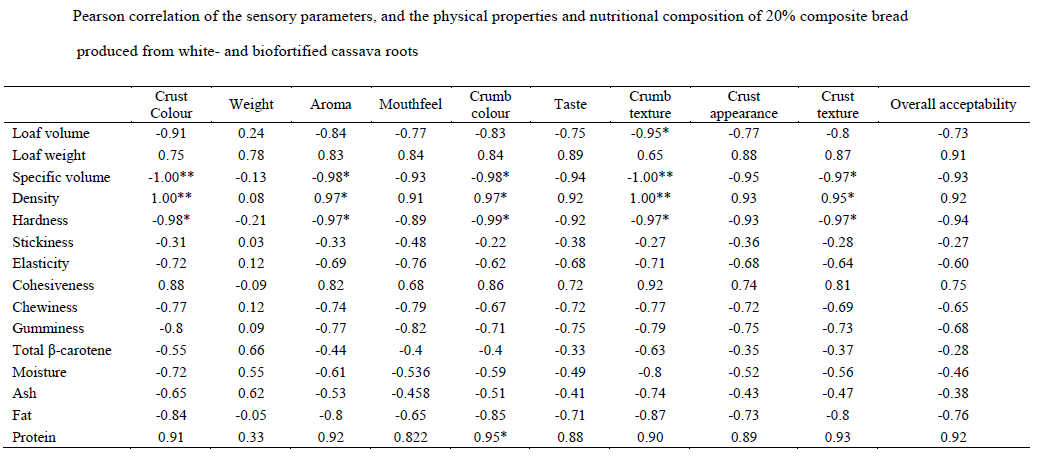With proper processing and utilization, biofortified cassava may contribute to the nutritional status of the consumers, thus, the need for this study. High-quality cassava flour from white- (TME 419) and biofortified (TMS 01/1368) cassava varieties were produced at a commercial processing factory, after which the flour is composite with wheat flour to produce bread. The nutritional composition, physical properties and sensory quality of the composite bread were analyzed using standard methods. Results showed that composite bread from 20% biofortified cassava flour (20-YCF) had a higher value of total β-carotene (0.74 μg/g), moisture (37.83%) and ash (2.29%) contents. The fat (3.72%) and protein (12.83%) contents were higher in 20% white cassava flour (20-WCF) composite bread. The 20-YCF composite bread had the highest loaf volume (3286.2 cm3), elasticity (6.32), chewiness (40.51 N) and gumminess (6.41), 20-WCF composite bread had higher specific volume (3.59 cm3/g) and hardness (176.50 N). The 100% wheat bread had higher cohesiveness (0.10) and loaf weight (932.35 g). A significant negative correlation (r = - 0.98, p≤0.05) exist between bread hardness and protein content. The composite bread compared favourably with the 100% wheat bread in terms of weight and aroma, but, the 100% wheat bread was more acceptable.

